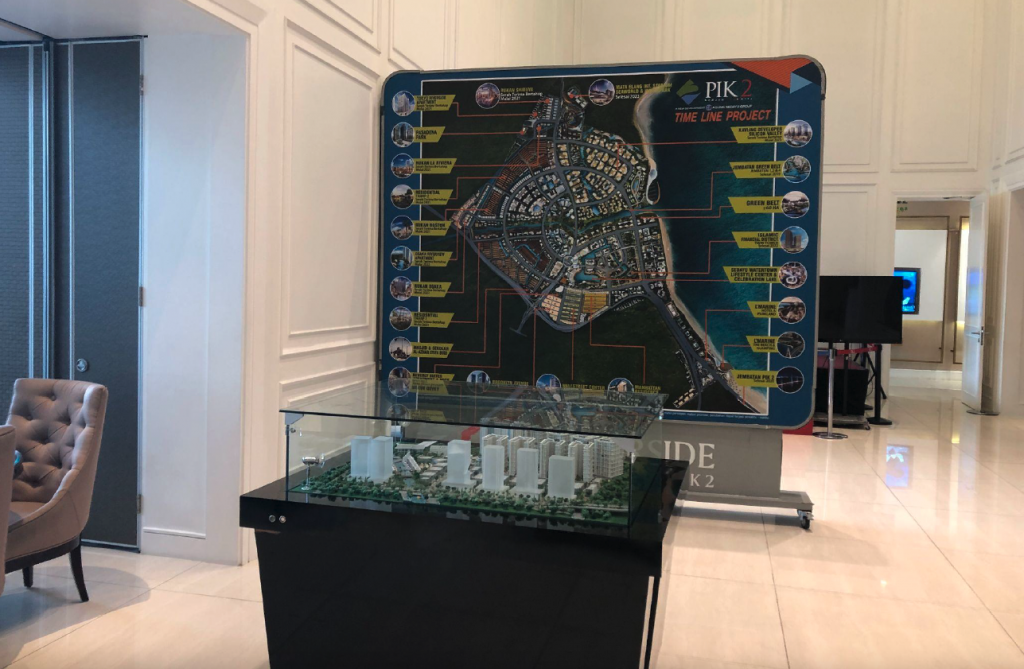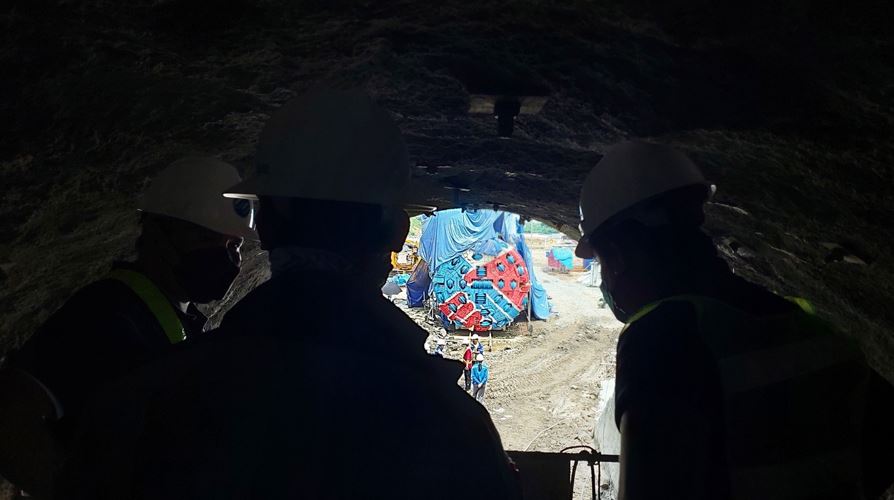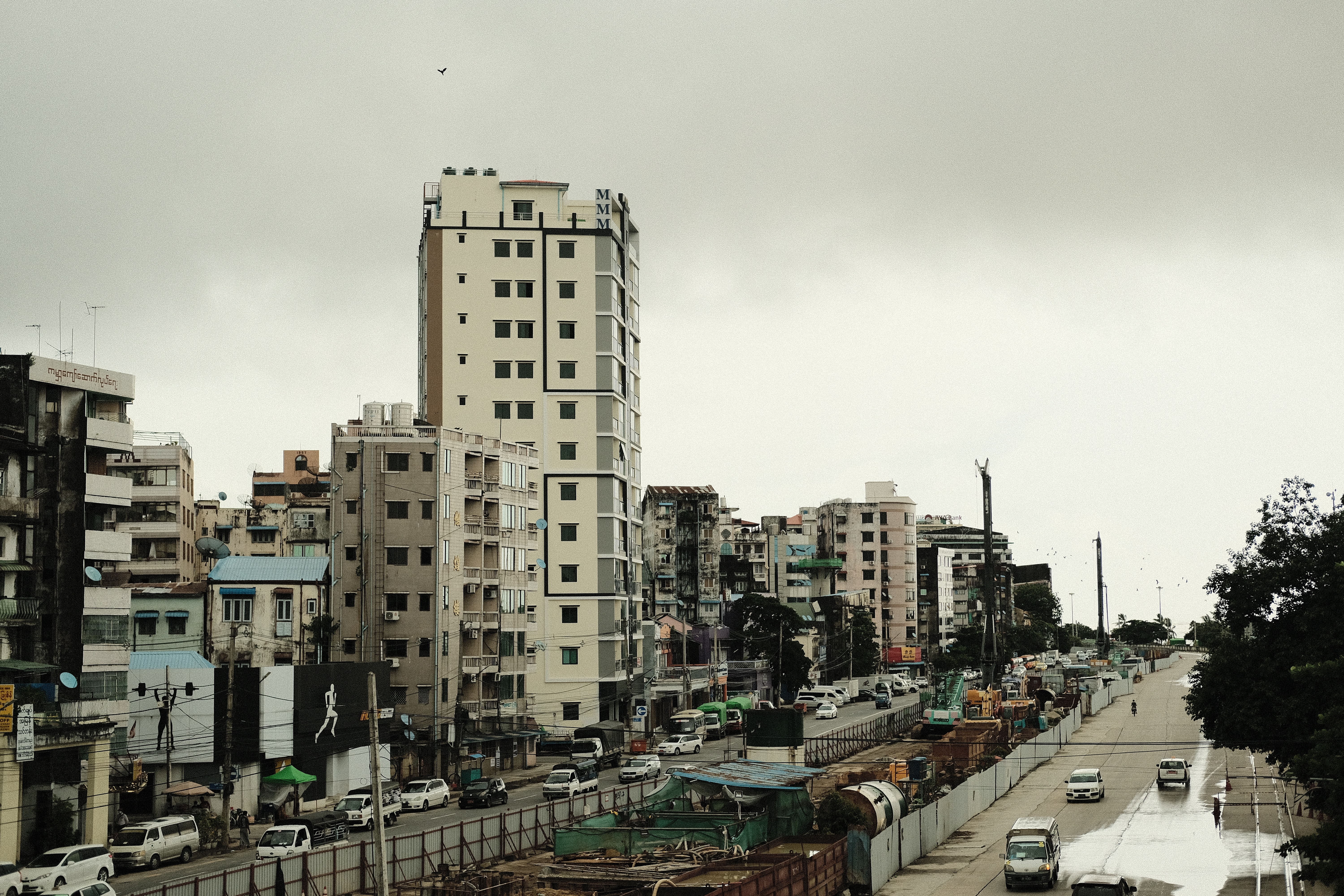The future of Jakarta, Indonesia’s capital city, has become an object of speculation owing largely to poorly regulated, private sector-driven development and high rates of land subsidence. We are now seeing the emergence of splintered ecological security as developers provide their own flood mitigation and water supply infrastructure, further entrenching existing socio-spatial inequalities, writes Emma Colven
_______________________________________________
Jakarta, Indonesia’s capital city – at least for now – has become something of a poster child for urban climate risk in recent years. As a delta city traversed by thirteen rivers, Jakarta has long experienced flood events. Yet, owing largely to poorly regulated, private sector-driven development and high rates of land subsidence, flooding has become so frequent and damaging in recent years that the future of the city has become an object of speculation. Development processes and practices associated with speculative urbanism have contributed to this water crisis, as I discussed in a talk I presented to SEAC last fall.
Scientists largely attribute high rates of land subsidence to groundwater overexploitation. Subsequently, a clear political agenda has crystallised around resolving deep groundwater overexploitation in the past five years. While the city has committed to reducing usage – such as stopping groundwater extraction by public buildings – the lack of a sufficient alternative surface water supply is a major stumbling block.
Flooding is therefore closely connected to the city’s protracted water supply crisis. With increased development and changing consumption patterns, the supply generated by existing water infrastructure is quickly becoming insufficient, and Jakarta now faces the prospect of future water shortages. Indeed, this crisis has already arrived and has been a protracted one for many residents. As the work of Michelle Kooy and her colleagues’ has documented, low income residents typically rely on a myriad of sources of drinking and bulk water, including groundwater, which is by far the cheapest. But shallow groundwater reserves are becoming unviable due to increased salinisation (caused by land subsidence) and contamination.
Furthermore, Jakarta’s emergent crisis has the potential to undermine the real estate sector’s profitability, as well as the future of the city itself. While the impacts of water crises on residents and their resilience strategies are generally well understood, we have comparatively little knowledge of how the real estate industry is affected by, and responding to environmental risks. To understand this, I have been conducting semi-structured interviews with property consultants and market experts, bureaucrats, and other stakeholders in Jakarta, as well as an analysis of relevant planning documents, market reports, and other relevant materials. Since the Covid-19 pandemic interrupted fieldwork, I have been collaborating with lecturer Wahyu Astuti from the Department of Planning and Real Estate at Tarumanagara University, Jakarta. Together, we have conducted interviews remotely via Zoom.
We have focused our research on North Jakarta, which, despite being the site where the city’s water crisis is arguably most visible and acute, has also been subject to intense speculation in recent decades. The highest rates of land subsidence in the city have been recorded in North Jakarta, groundwater is increasingly compromised by saltwater intrusion as the ground subsides and piped connections are sorely lacking. Residents rely on boiling groundwater and purchasing bottled water for drinking at a greatly inflated cost. The risk of flooding is also eminent: this area is the most vulnerable should the city’s sea wall be breached. The arrival of capital and wealthy residents, and the intensification of upscale development has contributed to further entrenching divides in an already uneven landscape: white, gated mansions with neoclassical columns and water fountains, new golf courses, and shopping malls push up against crowded kampungs with poor quality roads, where young, tattooed preman can be seen extracting tolls from truck drivers.
One of the most interesting findings of this research so far has been the divergent perceptions of risk (both financial and environmental) among different actors. While Jakarta is recognised internationally as the world’s fastest sinking city, the continued property development and investment in Jakarta led me to hypothesise that end-users (those who purchase property to live in) and investors do not necessarily equate environmental risk with financial risk. This has thus far been largely confirmed by interviews with property sector consultants and experts who report that flood risk and the potential for water shortages have not had any real impacts on the market.
On the one hand, this may be due to a lack of knowledge. As one consultant from the Jakarta office of Knight Frank reflected in a 2019 interview: “…people, investors, home buyers are very ignorant about this serious topic. And this is very, very unfortunate (…) I don’t think a lot of investors or consultants are putting [flooding and sinking] as one of their key negative factors, you know, when they look into projects (…).” On the other hand, the continued demand for property in North Jakarta may reflect that buyers consider potential environmental risks outweighed by prospective financial gains. As the Director of the Jakarta Property Institute explained in a 2021 interview: “even with the news of land subsidence, even with the news of reclamation… people still want to move, their reason being because they have faith in that area. The demand is still there; if you build in the area… people will buy.” As long as developers are able to make good on the promise of a secure water supply and protection from flood risk, and there is consumer demand for property in North Jakarta, the development will continue in potentially environmentally risky areas. Next month, we will begin surveying households in North Jakarta in order to understand residents’ perceptions and evaluations of environmental and financial risks relating to flood events and water shortages.
 Figure 1: PIK2 Marketing Gallery. Photographed by the author in 2019
Figure 1: PIK2 Marketing Gallery. Photographed by the author in 2019
While buyers and investors are either naive or unconcerned about risk, interviews conducted thus far have suggested that property developers take the potential for flooding and water shortages very seriously and use strategies to insulate their developments from the impacts of Jakarta’s water crisis. Interviewees described how developers would use their own research teams to collect information on land plots and avoid buying land, for example, with a history of flooding. This is somewhat ironic given that developers have historically built on green areas, and actually contributed to increased flood risk.
Developers also take steps to ensure residents in their developments have access to a sufficient water supply and safety from floods, creating what Mike Hodson and Simon Marvin have described as “premium ecological enclaves” that offer “bounded” security for those who can afford to live within their walls. For example, developer Agung Sedayu Group assures prospective buyers that properties on PIK2 (Photo 1) – a self-proclaimed “world class” live-work-play district and extension of the existing PIK development in North Jakarta – will be protected from flood risk via a Dutch-approved polder system (Photo 2).
 Figure 2: PIK2 Marketing Gallery. Photographed by the author in 2019
Figure 2: PIK2 Marketing Gallery. Photographed by the author in 2019
Splintered Security
Tracing its roots to the Dutch colonial era, Kooy and Bakker (2008) described Jakarta’s modern piped water network as splintered from its very inception, intended to provide European settlers – but not native Indonesians – with access to a clean, modern water supply system. I argue that we are now seeing the emergence of splintered ecological security as developers provide their own flood mitigation and water supply infrastructure.
This privatisation of protection from flood waters and water security emerges from a broader history of private developers taking the lead in shaping Jakarta’s development. As Herlambang et al. (2019) argue, the 1992 spatial planning act that required local governments to produce master plans, provided a “window of opportunity” for developers: local governments lacked the capacity to do this, and so developers were able to build as they wished.
Despite the tendency towards master planning in Jakarta, the city’s flood mitigation efforts are generally fragmented and piecemeal owing to the myriad of state and development agencies working in this arena (including but not limited to regional and national government agencies, the foreign development agencies of Japan and Korea, and Dutch consultancy firms) and a number of incomplete, delayed, or unrealised projects. Similar challenges exist with water supply: both the provincial government of Jakarta and the Indonesian government have pursued numerous projects to improve water infrastructure and quality, and increase water supply, but many of these remain unrealised, usually due to political and economic factors such as bureaucracy and funding.
By contrast, developers with access to private capital have the capacity to ensure their developments are protected from flood risk, while also capitalising on this promise, thus enabling continued property sales in otherwise environmentally risky areas. For example, developers raise their land plots to construct on elevated ground, thereby facilitating surface runoff during high precipitation events, thus reducing flood risk. Private developers also promise plentiful water supply and security from prospective shortages by providing private infrastructures, such as water treatment and desalination plants, reverse osmosis infrastructure, and greywater recycling. Further, developers’ efforts to provide security also redistribute these environmental risks to other people and places, for example by displacing floodwaters onto kampung communities adjacent to their developments.
My preliminary findings, therefore, suggest that the strategies deployed by private developers have potentially significant implications for people and places well behind these securitised enclaves. This underlines an important reality of urban adaptation in Jakarta and other cities across Southeast Asia: it is not only water crises but also how we respond to them that holds the potential to further entrench existing socio-spatial inequalities. As researchers, we have a responsibility to document the ways that urban adaptation strategies – whether state- or private sector-led (unintentionally) – reinscribe or heighten environmental risk, and to bring the inequitable dimensions of adaptation strategies to the fore.
______________________________________________
Acknowledgements
This blog is based on a virtual talk given on 24 November 2021 and titled Property, Profit & Risk: Jakarta’s Real Estate Industry and the Ongoing Water Crisis as part of the SEAC Southeast Asian Waters Series, wherein I presented preliminary findings from my ongoing research project, “Speculating on Jakarta’s Future: Real Estate and Crisis in Jakarta”. Funded by the Regional Studies Association, my research aims to understand how processes associated with speculative urbanism in Jakarta have contributed to the city’s water crisis, and how this water crisis, in turn, shapes urban development and planning practice.
______________________________________________
*Banner photo is the author’s own.
* SEAC hosted a talk by Dr Emma Colven on “The Production of Jakarta’s Water Crisis: A Political Ecology of Speculative Urbanism” in October 2020. A video recording of the event is available to watch here.
*The views expressed in the blog are those of the author alone. They do not reflect the position of the Saw Swee Hock Southeast Asia Centre, nor that of the London School of Economics and Political Science.






Well stated and well said, Emma.
Being in one of the largest water company for over 30+ years, and recently in Jakarta in the past month, it is not hard to see the state of this countries infrastructure, geography, and technology is very sub-par.
Mother Nature/Earth of course plays a big hand in this also, with the sinking of this great city on average 10cm every year. At no fault to Jakarta, but not the most optimal place to have one of the largest cities in the world built.
Although the new capital will be starting to take form soon, I still seen many high rises being built and amid construction.
Drinking/potable water is unheard of anywhere close to this area, and bottled water suppliers have the upper hand for those who can afford such a luxury.
I feel for the majority of this great country and it’s many people.
I hope the world can learn that corruption, simply building, and making money till the resources are extinguished, then drop the land and capital like a hot cake and just move to another area is a solution!
There are millions left behind that will just perish with no help due to greed and corruption leaving them behind.
All in this world deserve potable water and safe shelters.
My hope is that your blog, Emma, is seen by many of power, intelligence, and resources to not only get involved in helping this beautiful city/country, but for all around this world.
Thank you